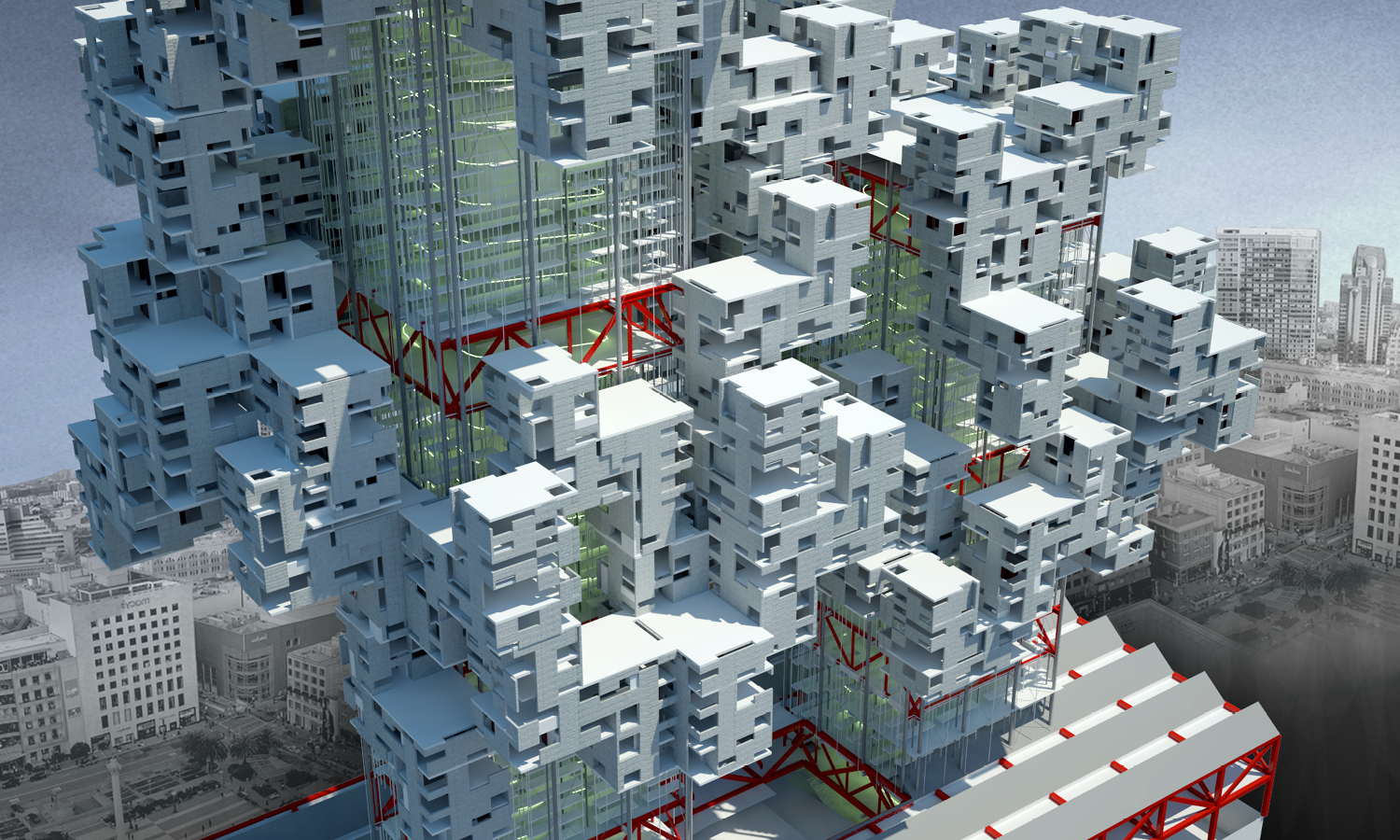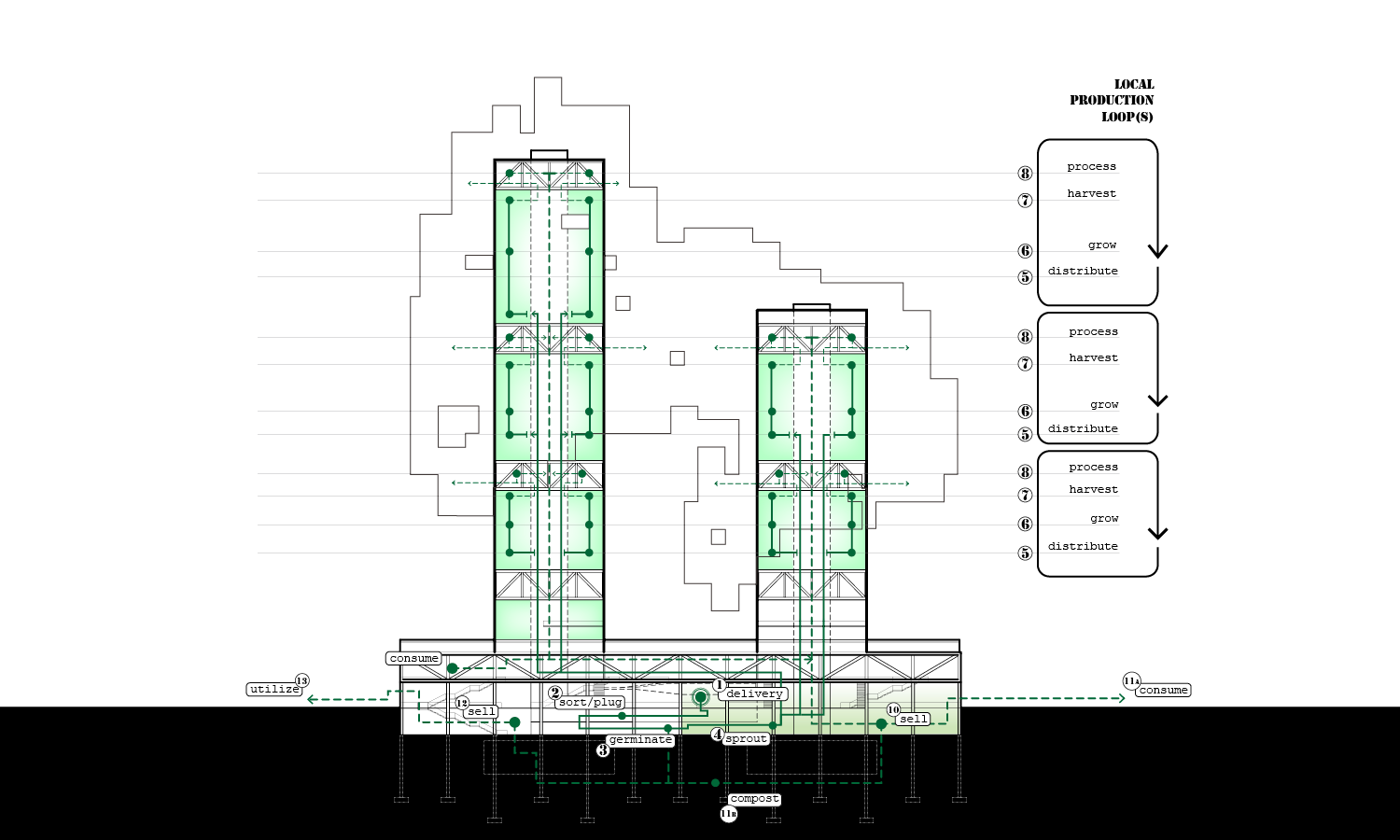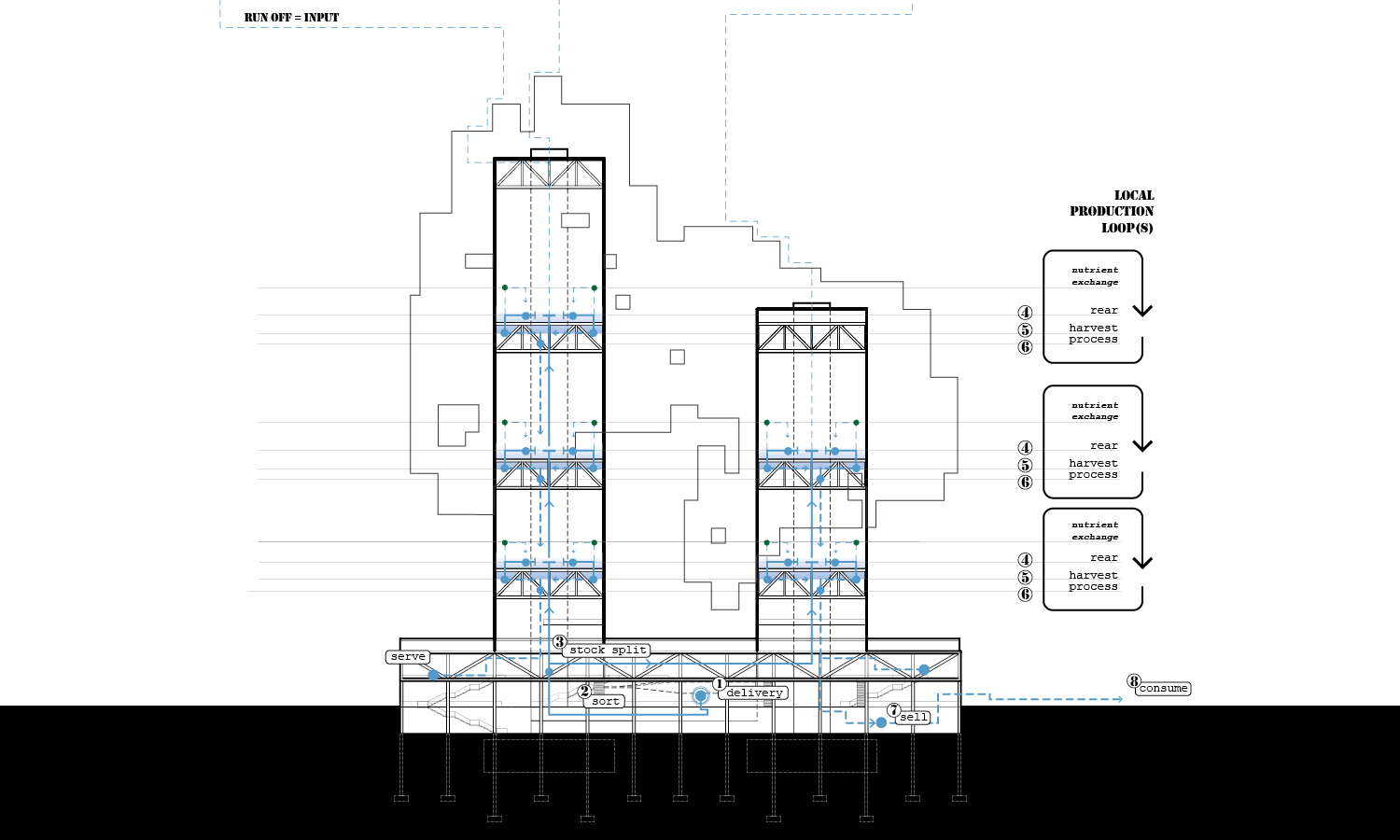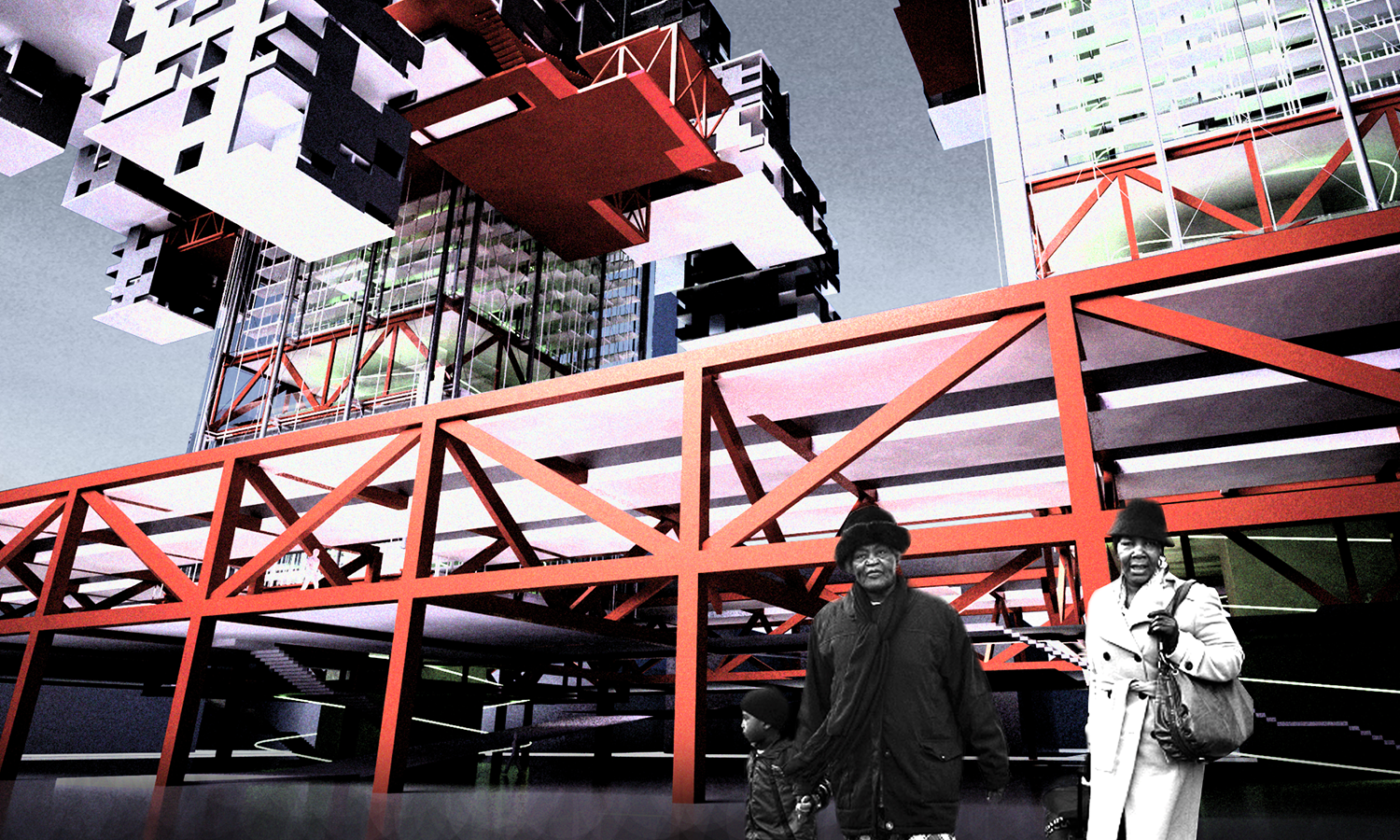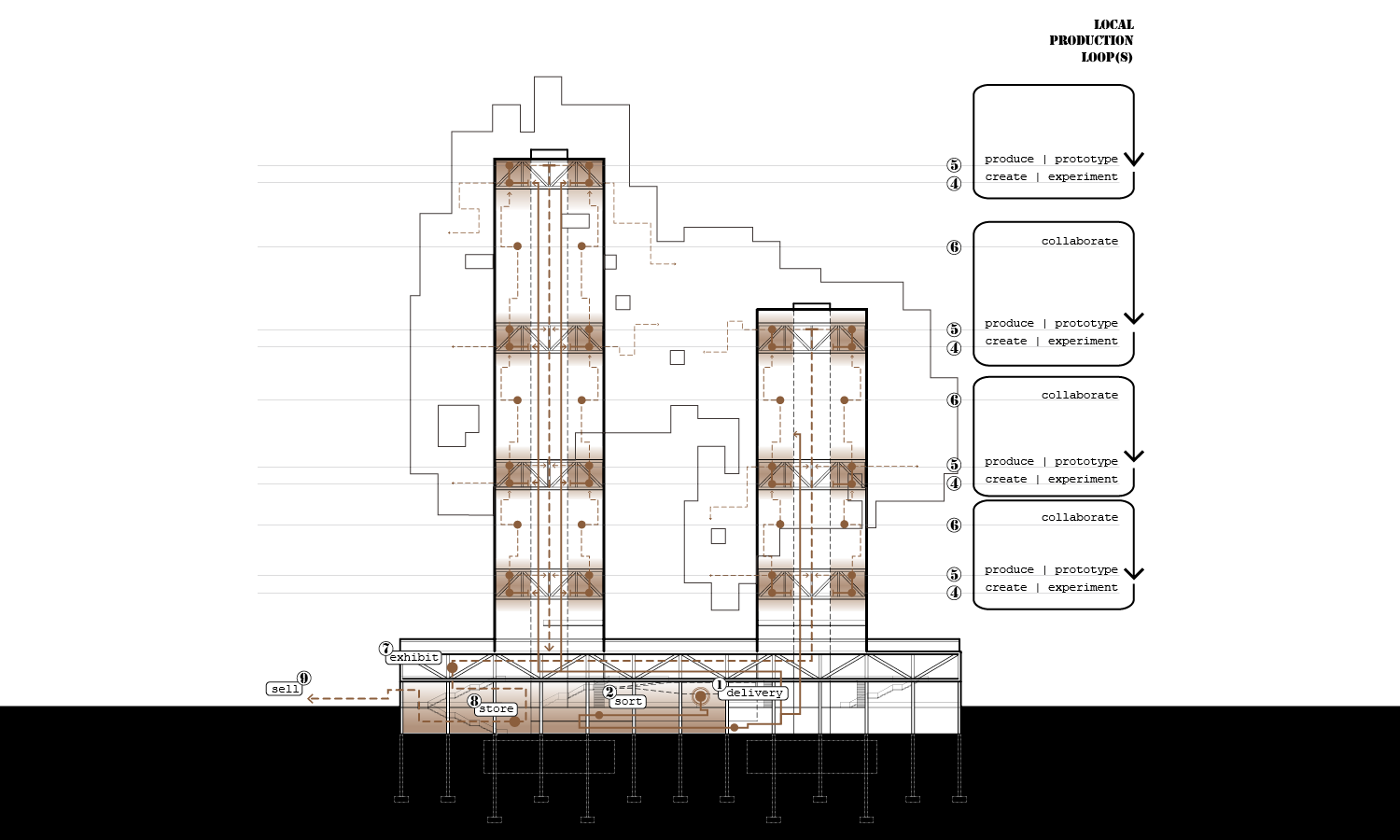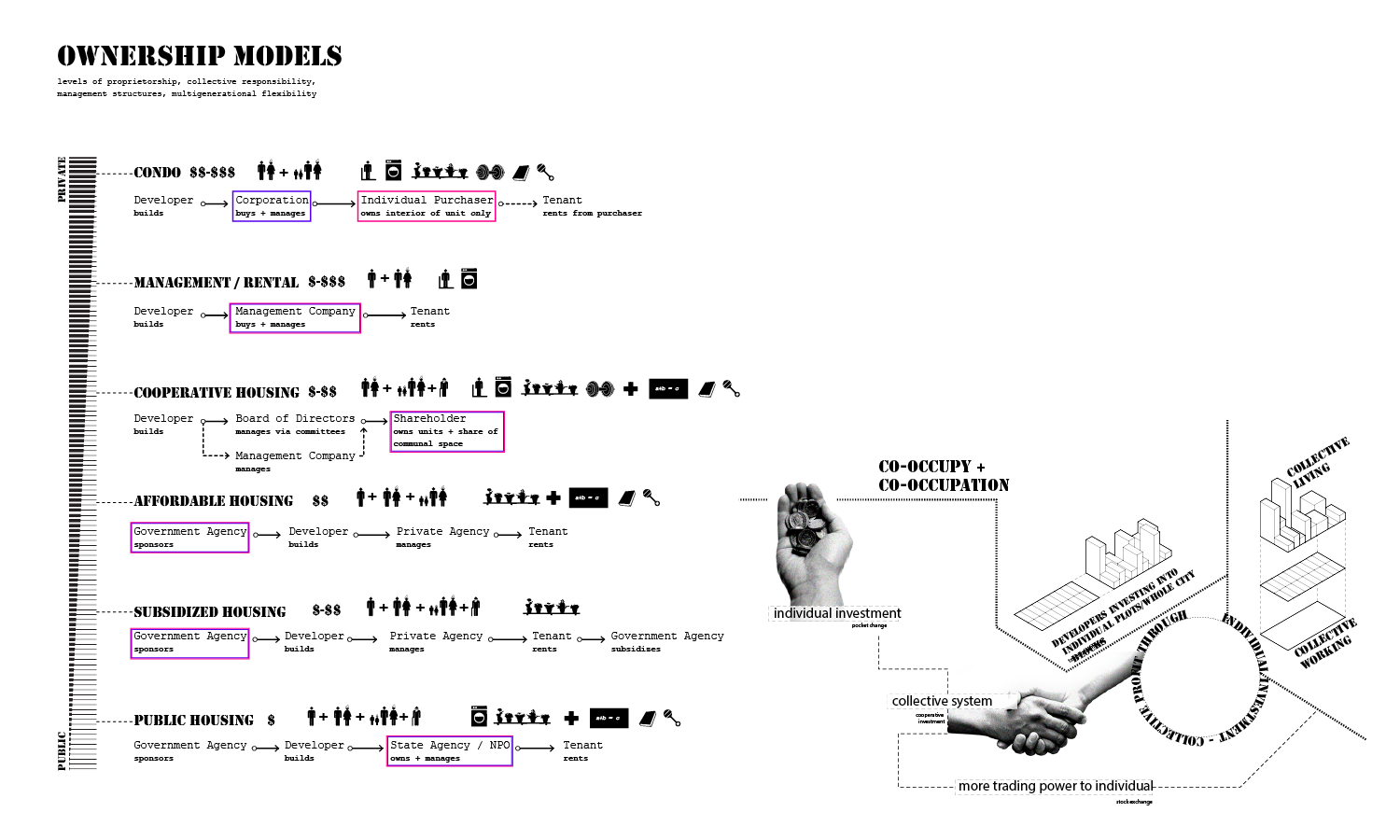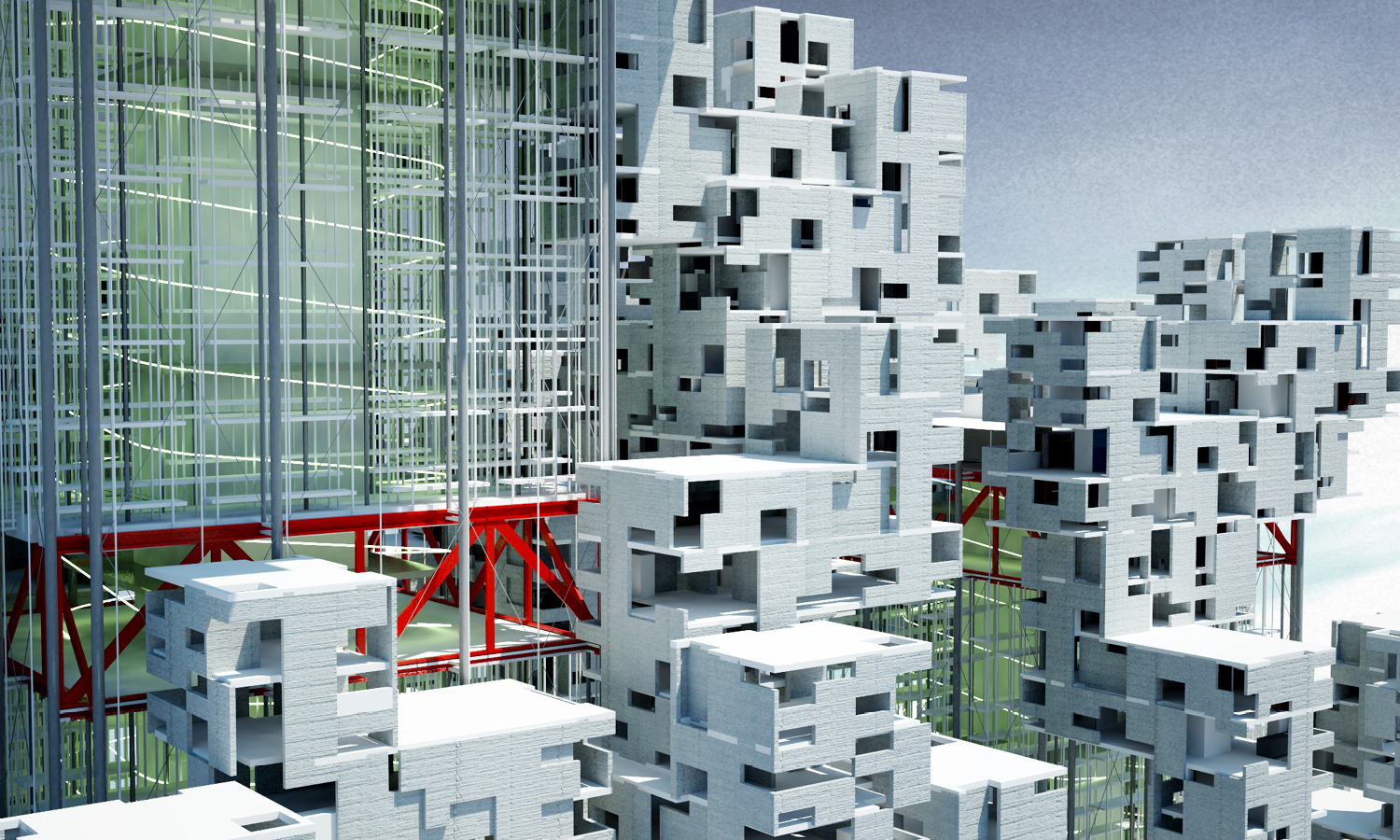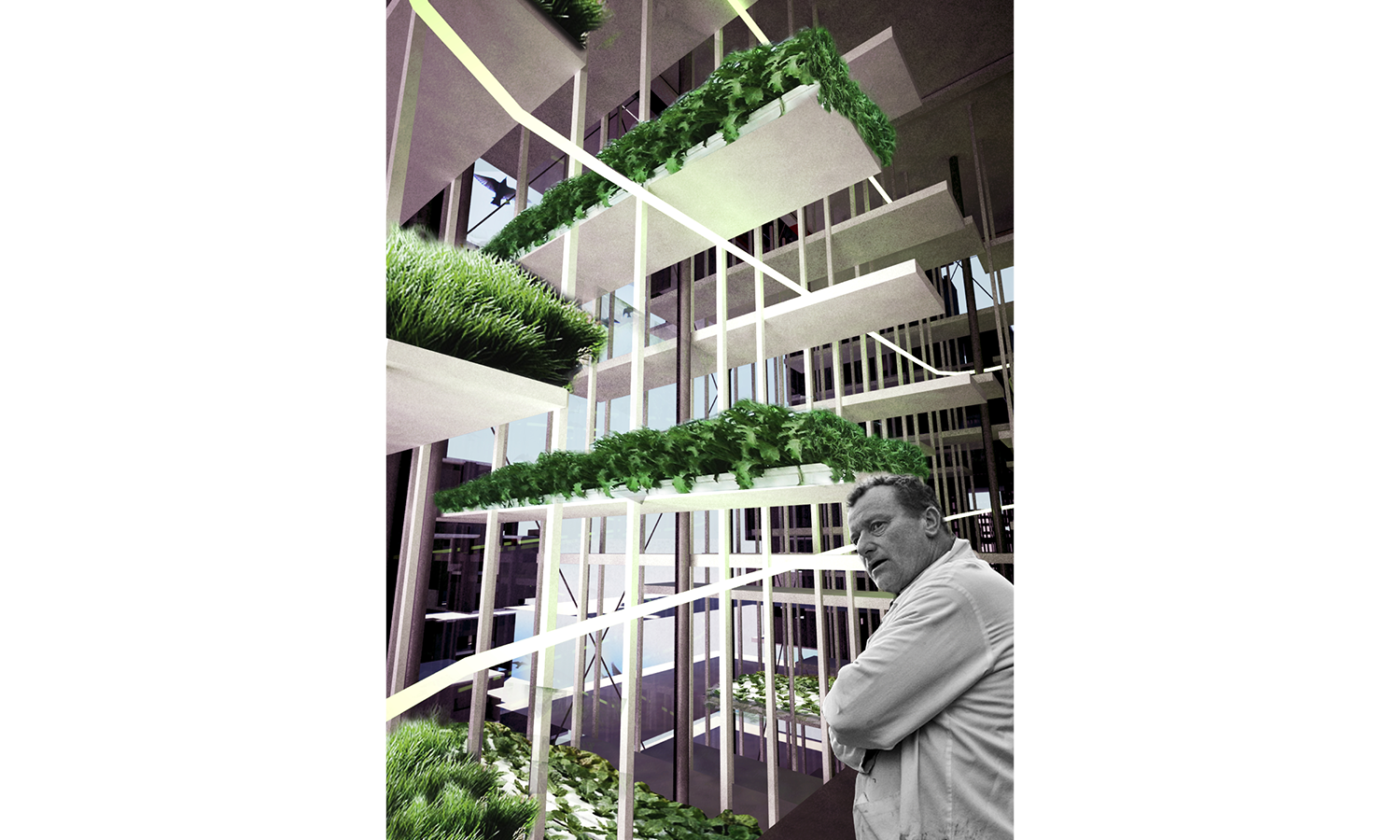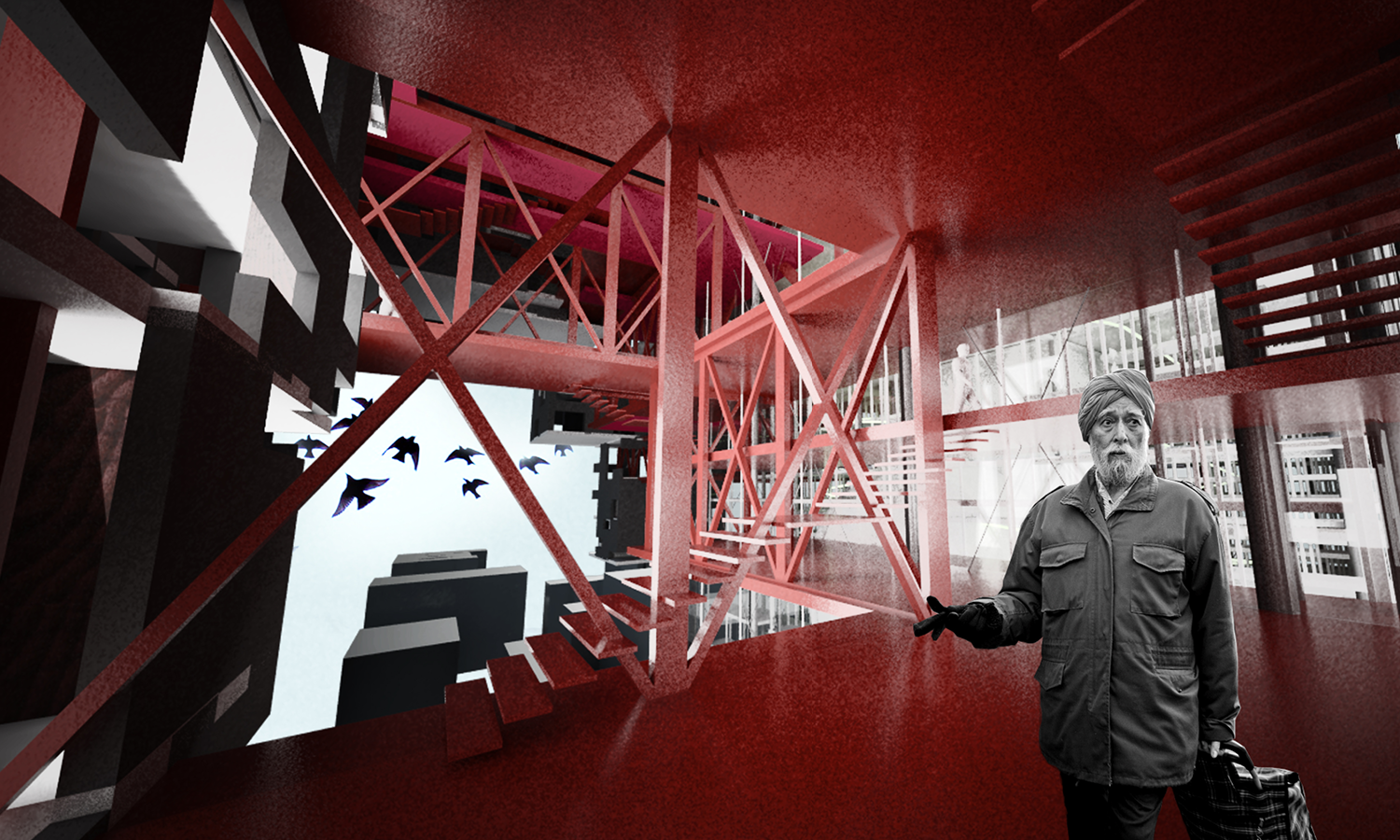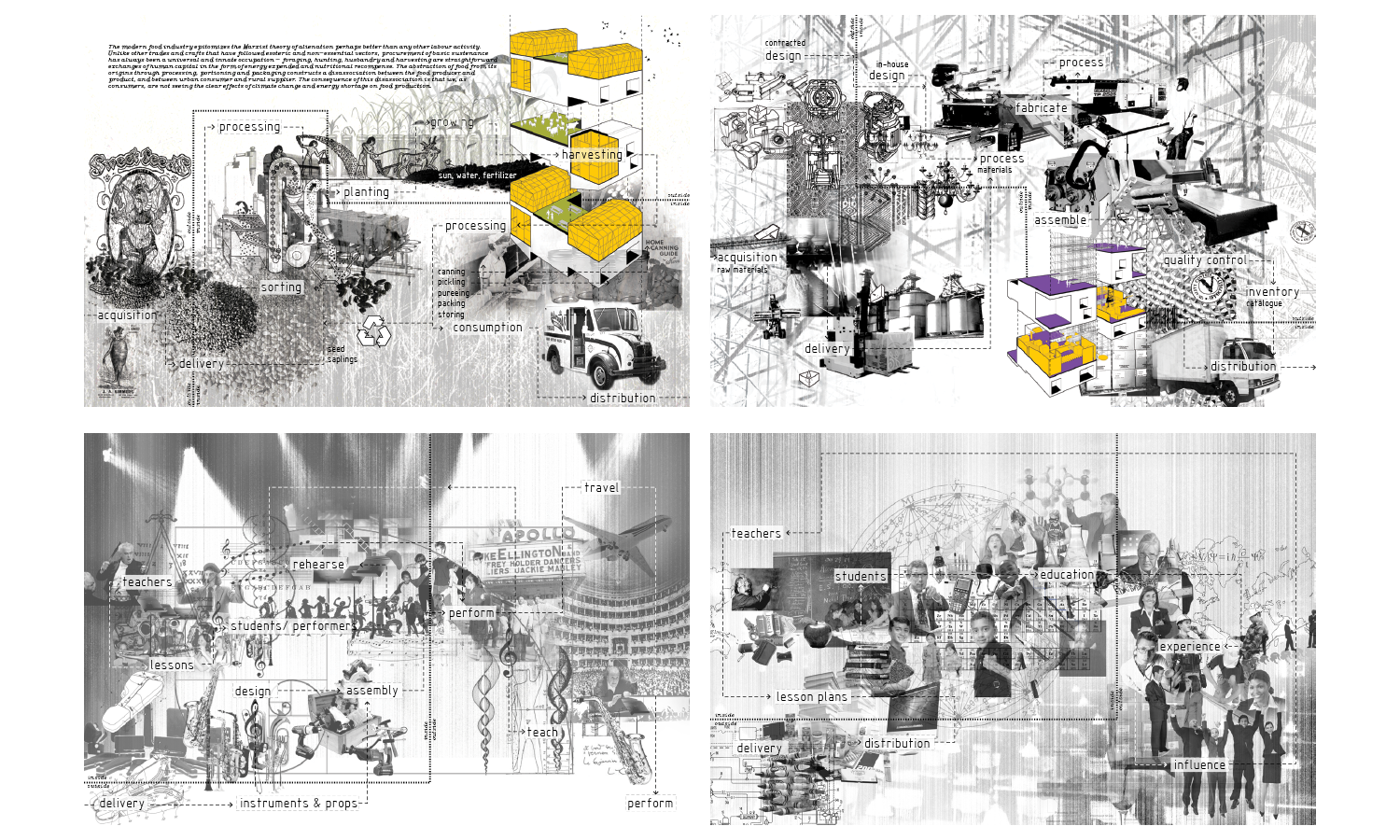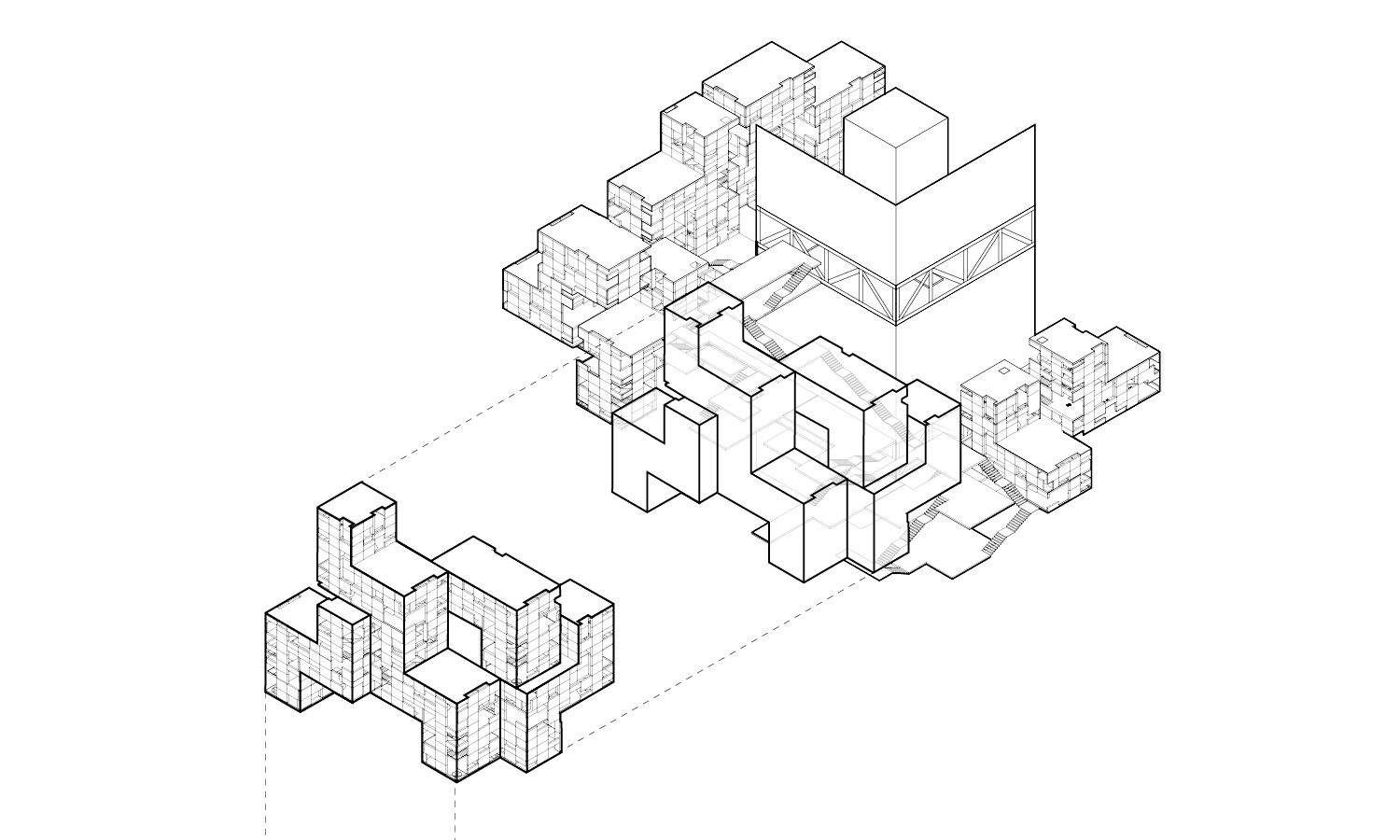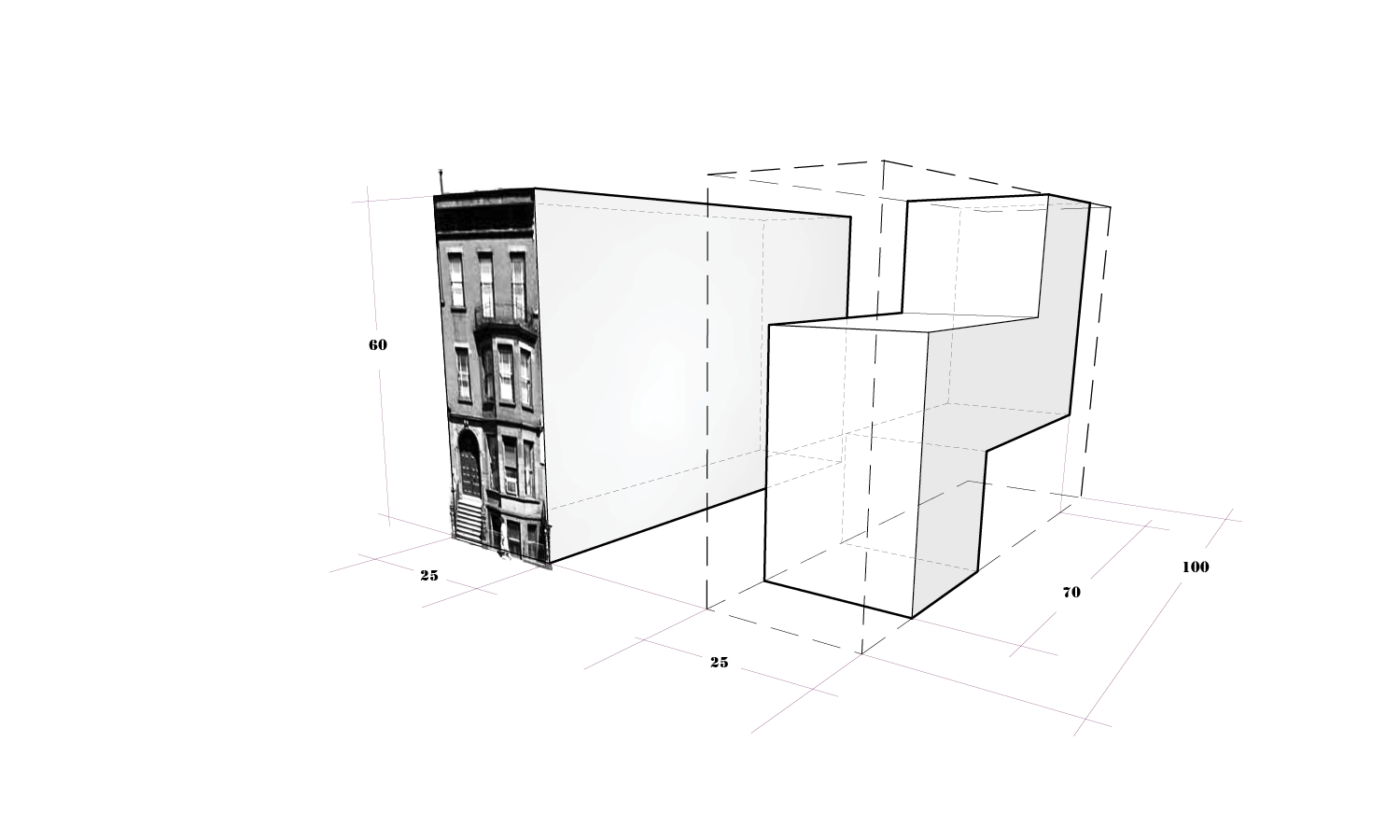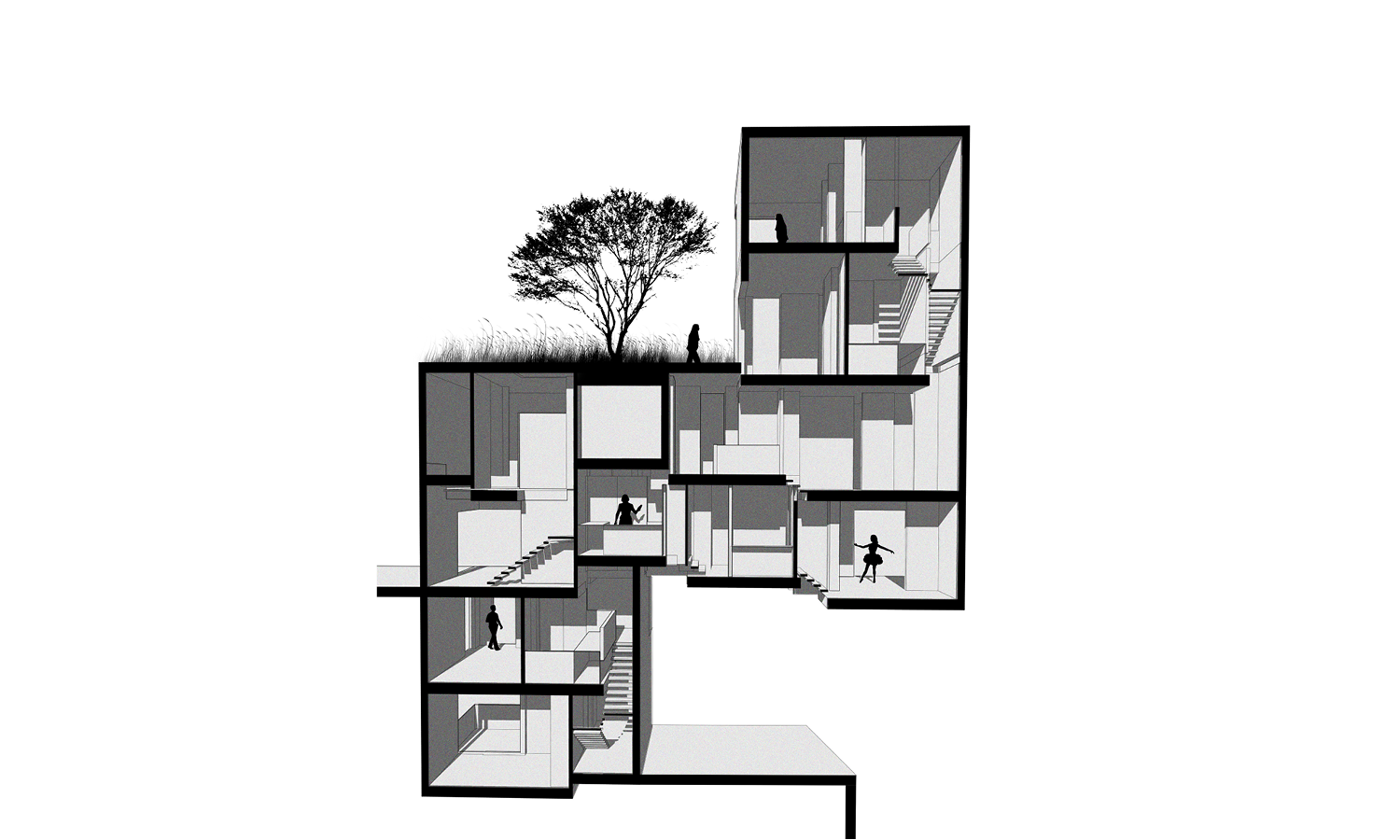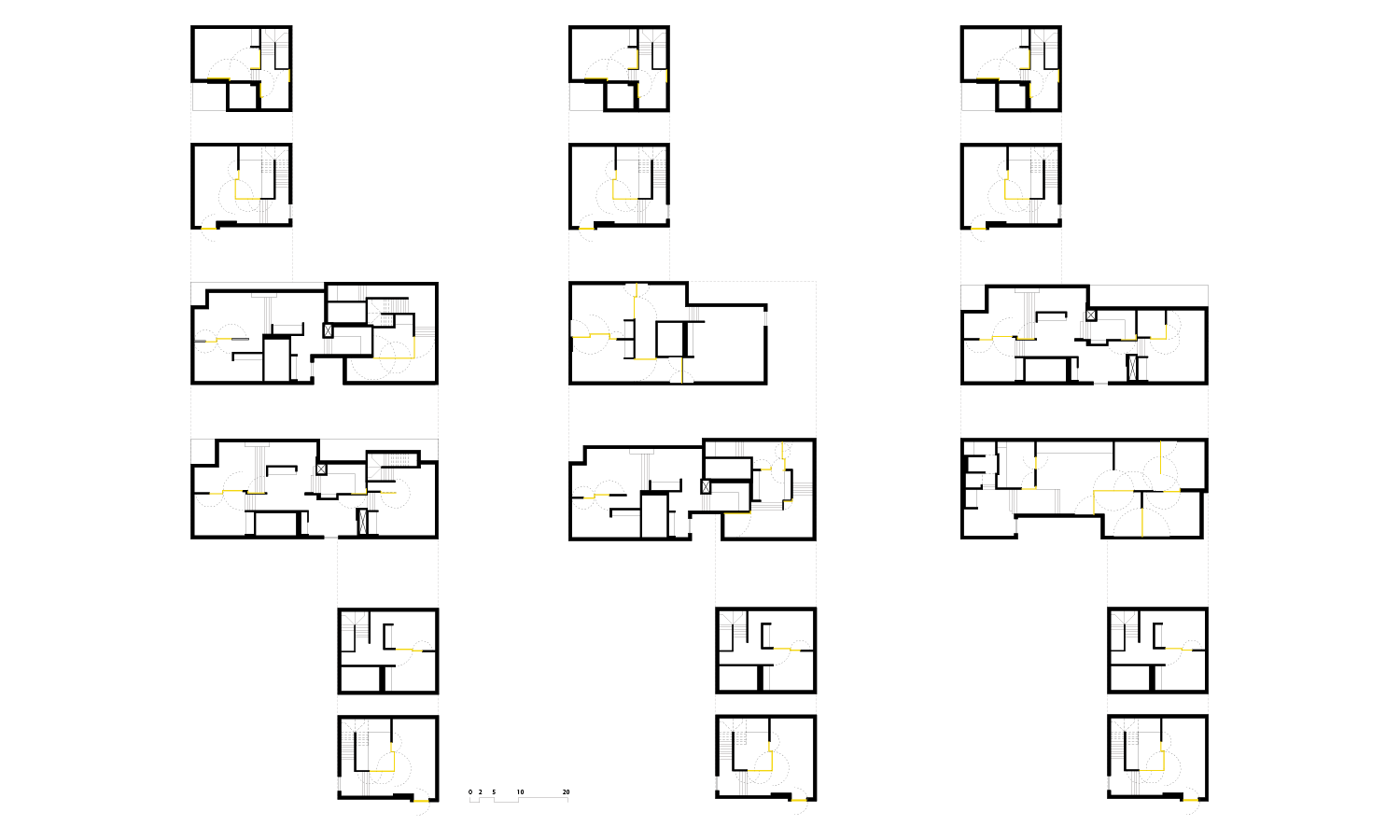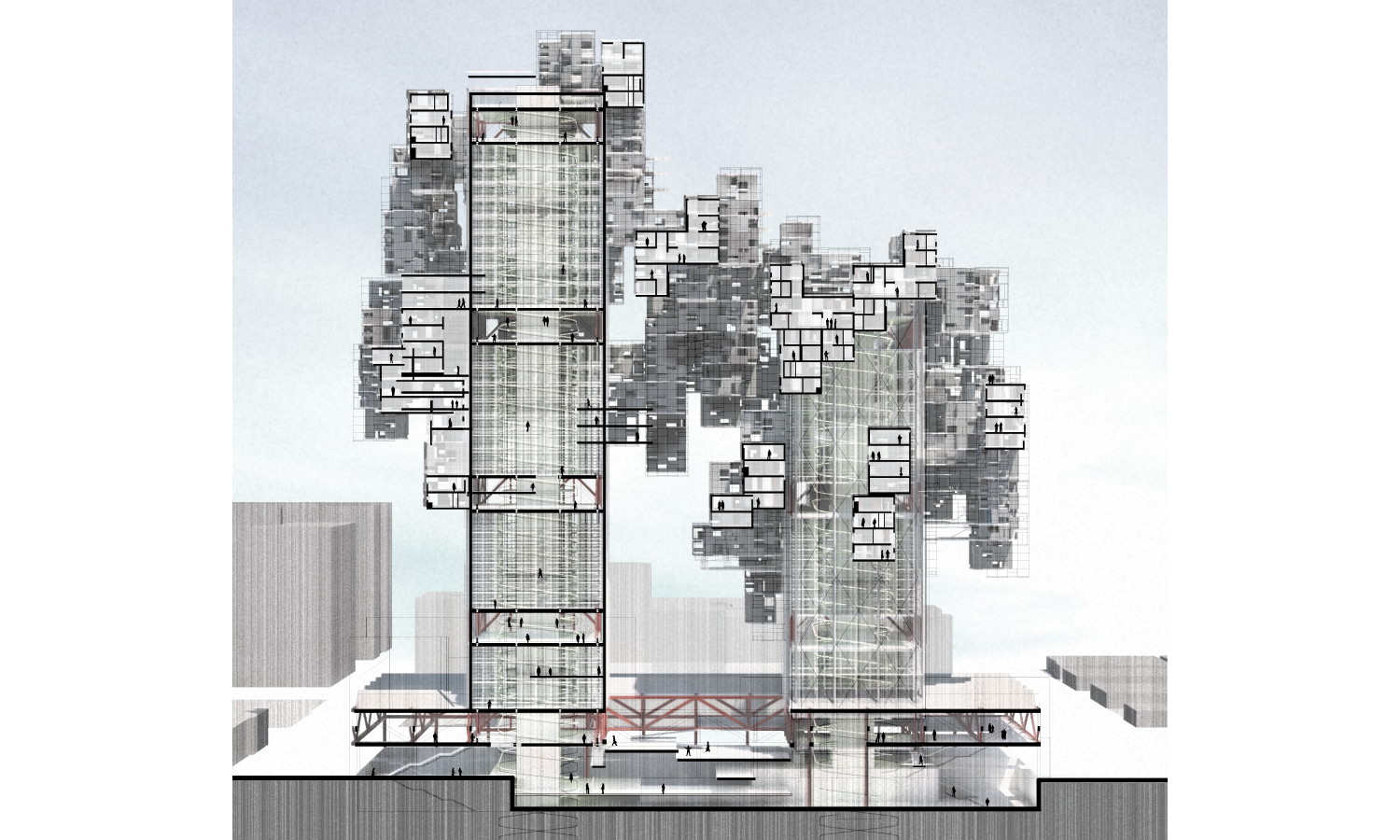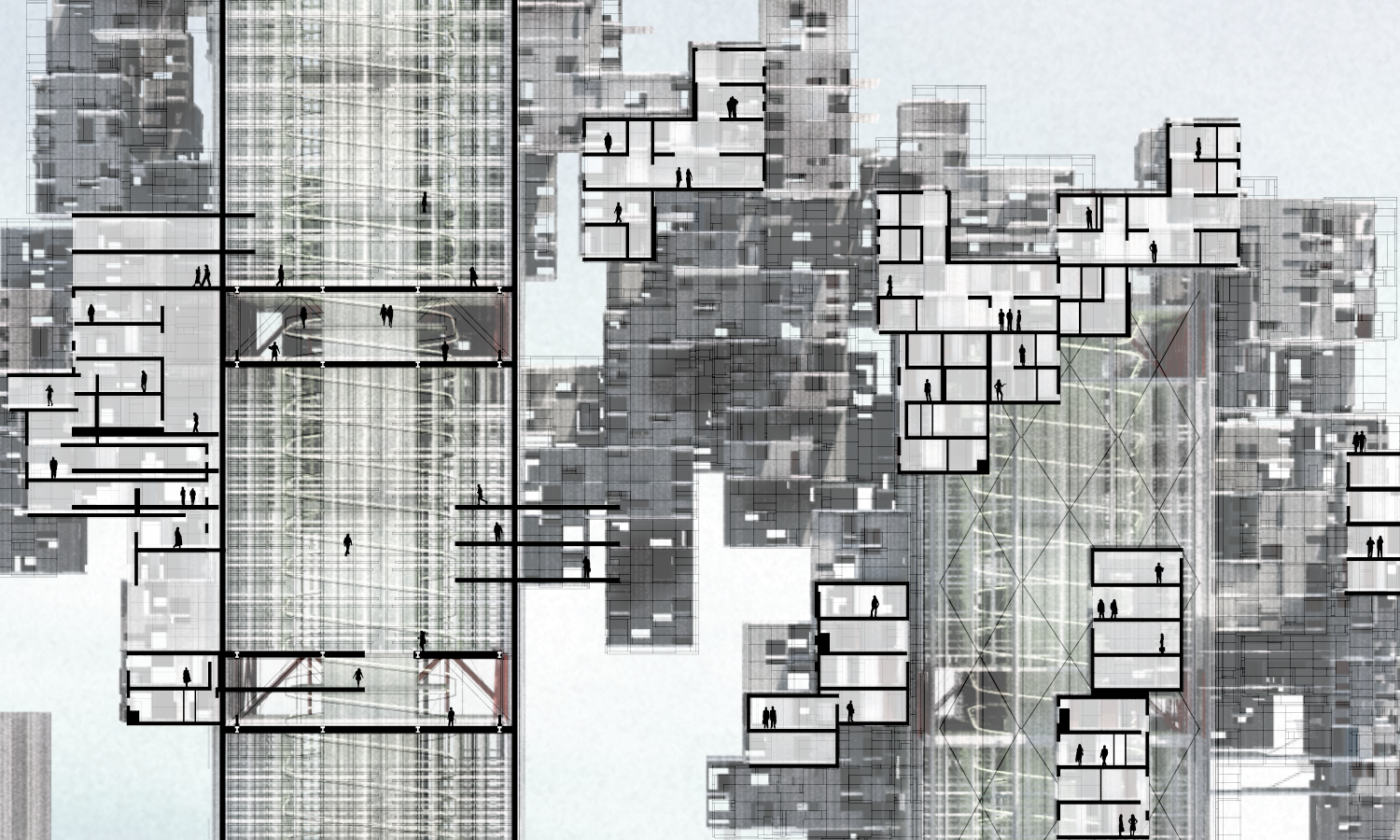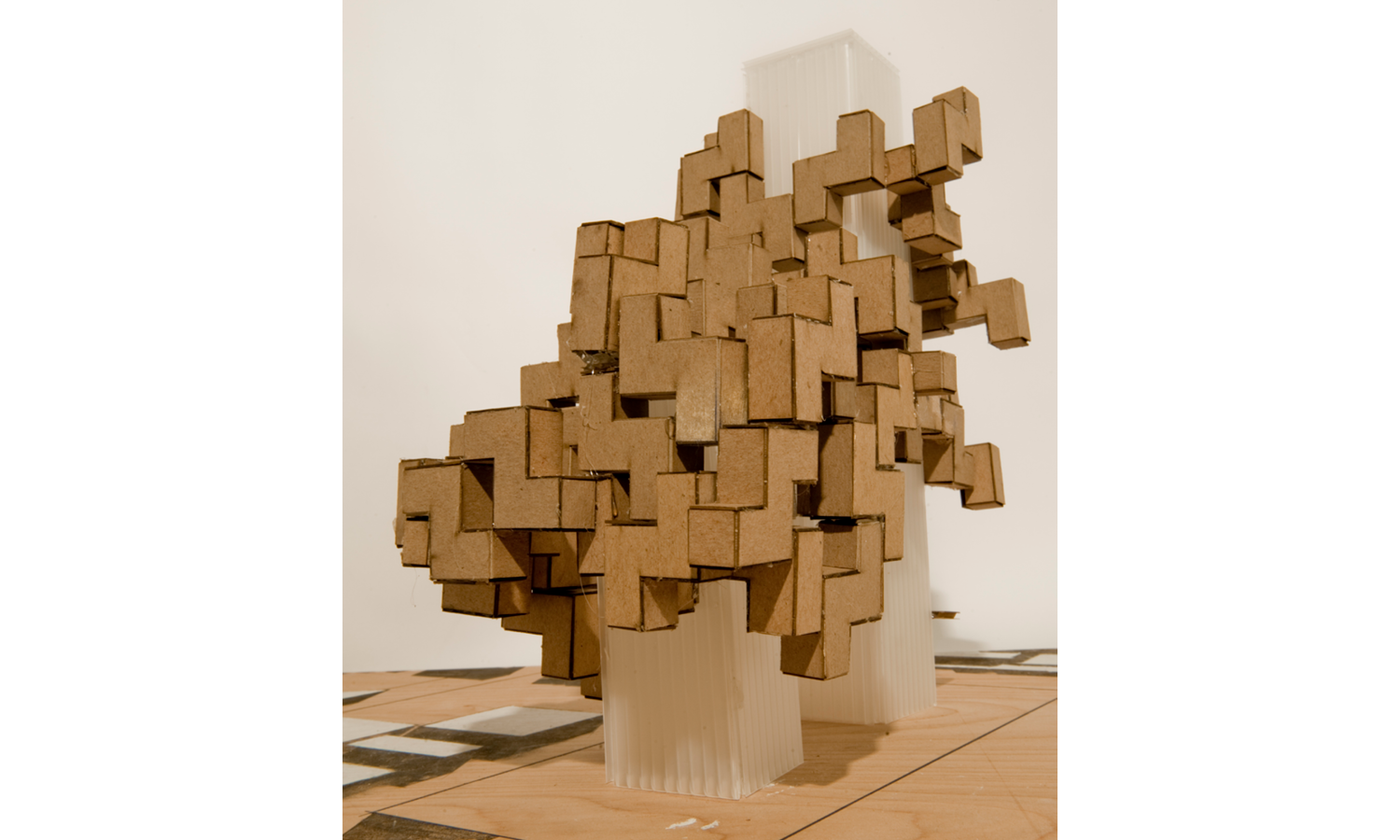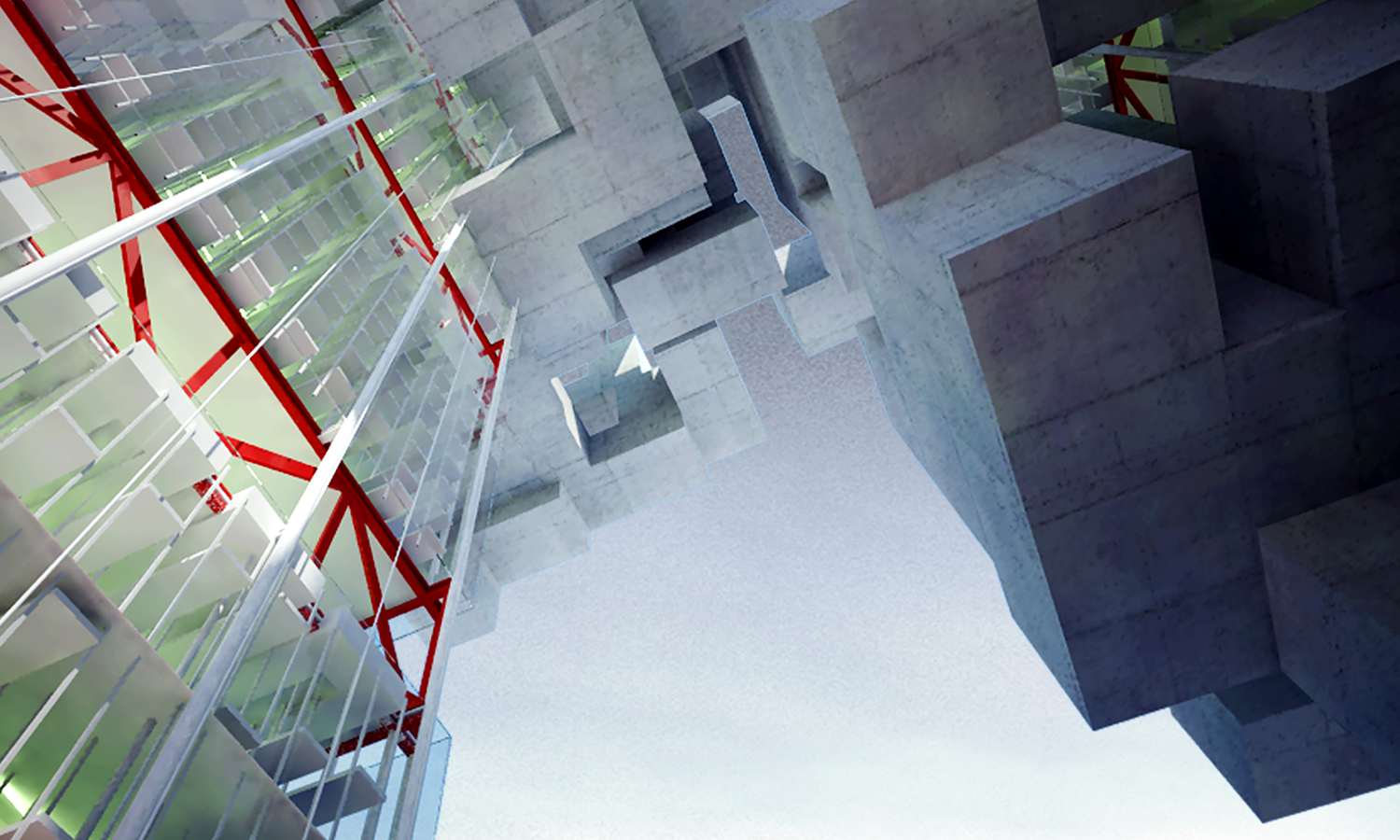HANGING HOUSING, PRODUCTIVE LIVING
| GSAPPA4003 | [Hanging] Housing: Productive Living | Jeffrey Johnson | Duration: Fall, 2011 | Partnered; Demitra Konstantinidis | ABSTRACT Publication |
Hinged between urban autonomy and dependence, the cooperative living and production model empowers the individual while amplifying the demands of the collective. We resist the wave of privatization that is washing this city with its sterile brush, and in turn push to find a new model for development and land ownership that profits local communities instead of millionaires.
The Pathmark currently existing on the site is removed and replaced with a superstructure containing light industrial, manufacturing, and commercial activities. Emerging from the superstructure are two towers housing hydroponic growing systems. Shareholders of the cooperative own a percentage of working and living space, and actively participate in the running of the system.
Each living module is subdivided, accommodating up to five separate units, ranging from studios to five bedroom units. These units are designed around a system of hinged walls. Family units can expand and contract with the overall module: claiming new territory as required by necessity. The living modules are clustered around the Local Production units (LPUs) that provide space for local businesses and communal activities, while forming the bridge between the growing towers and the living units. This project does not seek to optimize one program element over another but to expand our understanding of how the city can provide a more direct democratic model for living and creating.
“Revolution is not ‘showing’ life to people, but making them live. A revolutionary organization must always remember that its objective is not getting its adherents to listen to convincing talks by expert leaders, but getting them to speak for themselves, in order to achieve, or at least strive toward, an equal degree of participation.”
- Guy Debord
The relationship of New Yorkers between their place of ‘living’ and their sources of food [health] almost never reaches past the bodegas or the superstore markets. Our housing exercise sought to subvert this notion by intersecting the process of growing food with the routines surrounding residing. The crossroads of these two events extend beyond the autonomy of the New York block. Harlem, though a food desert, has a rich cultural heritage. By growing fresh food and melding it within the density of the city a once characteristically passive architectural typology hybridizes to produce new methods of production. The active participation of this hybridized architecture extends beyond the physical structure in offering its bounty to the local community.
By growing fresh food and melding it within the density of the city a once characteristically passive architectural typology hybridizes to produce new methods of production. The active participation of this hybridized architecture extends beyond the physical structure in offering its bounty to the local community. Introducing new methods of production the threshold between our city and our homes extends: a new transition between the urban collective and habitation. Two diametric characteristics of city life are brought into focus allowing new dialogue regarding ownership and civic contribution. New introductions and relationships are formed through active claiming and relinquishing of living space as well as coopting of communal space. We can now live out of the city – within – with our heads in the clouds.
